DEITIES
CHILDREN • OF • THE • TIRSAR
The Old Masters thought not, they looked not. In their blindness and eternal sleep, possibility unraveled its course.
The Old Masters have within their dreams the course of all things. Only in joining with the Tirsar’rg, their dreams, may you know their possibility, and what may never pass.
Rickar the Younger
“Dreams of the Tirsar”, Grandastium
THE PANTHEONS
The Tirsar
(“Old Masters”; Tira, masters; -sar-venerable. TEER-sahr)
Neutral in all ways, the Tirsar are the semi-sentient proto-deities of all existence. They simultaneously never were and yet always were, defying reason and understanding. They are, in short, all of possibility both realized and unimagined.
Tirsar’rg: Dreams Made Manifest
From the dreams of the Tirsar, called the tirsar’rg, come concepts and ideas of what may be, each contained in their own sphere of existence. Yet for every bit of a seemingly arbitrary bit of possibility made manifest, there is one inviolable rule of the Tirsar: each possibility is personified, and it is that personification which mortals call deity. In Evindale, action begets deity.
The Aldri’har
Over many eons, the dreams were repeatedly created, refined, or destroyed. Those that interact with the incredibly limited physical planes of reality have been called the Aldri’har. These divine aspects of the original Tirsar would soon enough be given individual names by the mortals who recognized their presence. Scholars claim, however, that no mortal can pronounce or even conceive of the real name of any one of the Aldri’har, for encoded in their real names is the very blueprint of reality.
This page is dedicated to the Aldri’har and their demi-deities.
Demi-Deities
Breaking from the literary tradition that demi-deities are part-human/part-divine, the Evindale demi-deities are divine creatures created in the realm of another deity, emerging as a facet rather than separate entity.
For example, Fayan and Fayer were created from Death’s appearance in Sythlia’s realm and are, therefore, demi-deities in Evindale.
Erithian
At the end of the Fourth Age, mortals had discovered and assembled pieces of the Caldra’da Helix, the only remnants of the first physical universe. When placed in a particular configuration, the nature of reality was rewritten and Nor’dagha rose as the predominant deity of the physical universe.
This Interregnum passed and during it, the belief systems of mortals changed. They found purpose in the creation of new deitis that more closely mirrored their own fears of a destroyed world. Names like Nor’dagha, Sythlia, Benos, and even the Tirsar fell to the wayside.
These gods came to be known as the Erithian deities, the gods of the Fifth Age.
The Erithians
Cylzin
Daedras
Erithis
Faylan
Hesseth
Kaedral
Saset
Tylan
Vaelan
The Unspoken
The Unspoken emerged from the depths of a tirsar’rg like malignant growths of thought—aberrant, diseased, and discarded fragments of reality from a time preceding R’shlidal. Beyond the boundaries of our known reality, they murmur in secretive whispers about their own realms and creations, far surpassing the scope of even the gods’ dreams.
What little is known comes from a Talan who died in the search for their knowledge:, Ilyas Ja-Mahdawi.
List of Known Unspoken
Ath’Shagoth – Darkened Serpent of Noghtlig
M’narcthul – Abyssal Sphinx of N’lyxanar
Ot’Acth – Black Ram of the Eternal Void
Noghtligoth – Lightless Sun of N’garset
N’saatathat – Sunless Witch of Saathot
N’thulanix – Void Whale of Og’morat
Qua’Goloth – Silver Moon of Y’ha’nthlei
Qu’thalic – Iridescent Spider of N’zaathoth
R’lythraac – Shadowed Tower of P’thagon
Sha’Zuuleth – Endless Labyrinth of T’saathe
Shognotet – Eternal River of N’gahth
Xa’Ngoroct – Crystal Skull of Ulthartog
Xoth’Omoth – Prismatic Eye of R’ly’noght
Zoth-Ommok – Timeless Leviathan of the Starless Depths

THE ALDRI’HAR
Of those born from the tirsar’rg, those that interact with the incredibly limited physical planes of reality have been called the Aldri’har. These divine aspects of the original Tirsar would soon enough be given individual names by the mortals who recognized their presence. Scholars claim, however, that no mortal can pronounce or even conceive of the real name of any one of the Aldri’har, for encoded in their real names is the very blueprint of reality.
Below is a list of the known Aldri’har of Evindale, the physical realms of Sythlia.
 Sythlia
Sythlia
“The Elemental Deity”, “First Mother”
Accursed creator of the physical universe, its tangential planes, and eternal life
The Becoming
Sythlia wasn’t the first deity to personify physical reality. Drenathis holds that distinction, but Stability as a concept had not yet existed. As soon as this first deity of a physical universe appeared, it blinked out of existence. Like a lingering memory, only a basic concept remained and upon it would a new universe be born.
The Creation of All Things
When Stability did finally become a possibility (and therefore its own tirsar’rg) a portion of the Tirsar melded with it, creating a consciousness. This consciousness of finite power—yet infinite in its own scope—would be later called Sythlia and from it, the universe was created.
Sythlia’s realm consists of multiple dimensions, only four of which form the known physical universe. The other dimensions, or planes of existence, were also created and form the stage on which various energies and elements would find a home.
From the building blocks of reality Sythlia fashioned the dreg’n, multidimensional beings capable of acting as autonomous extensions of herself to assist in the creation of the worlds.
The realms of energy and the elements were created alongside an ever-expanding material universe. Though it would take billions of years for these dimensions to form, Sythlia would also seek to emulate the spark of consciousness from the Tirsar in each. On the physical planes, various forms of life emerged through evolution, accelerated evolution by the hand of a deity, or outright creation.
Creation of Ævyn
It is possible that a tirsar’rg contains possibilities of which a deity is not aware. So it was with Sythlia and the concept of death. As the sole provider of the living essence, there was no need for clothing, procreation, or consumption. Her worlds grew unabated, teamed with life, and all flourished in Sythlia’s divine nourishment.
This was not without its faults. Over time, this non-stop growth would lead to significant discomfort. The pleas of the living caused her confusion; was life not what they wanted? To discover more and assuage her own loneliness as the sole deity of physical creation, she created Ævyn, the Great Consort, and sent him to walk among the living.
The First Murder, The Surge, and Arcana
Life continued to adapt, evolve, and learn as Ævyn traveled the worlds. Some life forms evolved to exist on worlds made only of gas, others in the elemental realms, and still others on rocky planets. Æyndal, or Evindale as it would later be known, is one such planet.
One people found their home deep in the natural caverns of the underearth. Within these caverns, the Slin discovered smelting, though crude at best. When Ævyn made it to this world, the Slin were among those who came to meet the Great Consort. One presented an object he had fashioned, a long crude bar of iron with one thin edge.
Only Sythlia had been known to create prior to this. To Ævyn, this object defied reality and what he knew of Sythlia’s tirsar’rg. Still, the process of creation necessitates exerting one’s will over their surroundings. Thus, mortals had become gods unto themselves, albeit severely limited in power.
Ævyn touched this object—though some say he was attacked with it—and immediately collapsed, his body inadvertently torn asunder. His blood poured out in The Surge, a wash of infinite divine energy across all realms of existence. This energy, however, was tainted by the will of mortals on their reality and was transformed to become arcana, the form of magic exercised by mortals as an expression of their will over their surroundings.
This gave rise to the demi-deities of death, Fayer and Fayan.
Cults & Beliefs
Today, Sythlia is a deity sequestered on the Isles of Ævyn, a place no mortal may ever touch. It is a land of eternal life, unique in its kind, yet it remains unknown to mortals who were now tainted by death.
Cults have risen that hope for the return of Sythlia and eternal life, while others believe death is the curse of Sythlia upon the living, not an action wrought by mortal will in the early days of creation.
Whatever the belief, Sythlia is not a deity who confers wisdom upon others. Even divination magics are often answered by the presence of other spirits; rarely does Sythlia answer the call of her own. This has led some to believe that Sythlia is dead and the facet of her that oversees the uncaring aspect of existence called “nature”—the deity known as Nor’dagha—is the only thing that remains of Sythlia after The Surge.
D&D 5e
Alignment: LN
Suggested Domains: Light, Life, Peace
Symbol: A three-petaled stamenless white flower (the oritel)
Pathfinder 2e
Areas of Concern: Creation, eternal life, and preservation of Her Plan
Edicts: Further life, stop wars, deny the use of arcane magic
Anathema: Cause the halting of life and life’s progress, study arcane magic
Divine Attributes: Intelligence or Charisma
Devotee Benefits
Cleric Spells: 1st: heal, 2nd: dispel magic, 4th: banishment
Divine Font: heal
Divine Sanctification: can choose holy or unholy
Divine Skill: Medicine
Domains: creation, healing, nature, perfection
Favored Weapon: None
The Italti
The energy contained in the spilled Blood of Ævyn, simplified as arcana, washed across all dimensions created by Sythlia in an instant. This Surge destroyed many of Sythlia’s living creations and transformed more than a few into magical beings. Still, some were so infused with the Blood of Ævyn they became living vessels of near infinite arcane power. They became known as the italti.
As the realization of their might was understood, some italti grew mad with power and sought to rule over those they deemed lesser. These beings created the first cities as monuments to themselves with impossibly tall spires of obsidian, warped architecture of unknown materials, and floating fortresses of worship, all held together by their mere whim. In Evindale, the living of the Second Age were soon subjugated under the tyrannical grip of these new god-kings:
- Ardulam of the Shadows is said to still thrive in the secrets that lie in the heart of all beings. Her spires are hidden and merge with the shadows themselves.
- Domanaris who consumed the knowledge of lesser italti and created the first tomes to record it all.
- Elyxendria possessed the ability to manipulate the flow of time within her domain, an effort that effectively rewrote how space-time works in certain areas of the worlds.
- Gred’Ghul the Dreaded who sought to master realms between realms, the Umbra.
- Meiqir of Slasia existed between life and death, something said to give rise to undeath.
- Melirix enslaved the most in his empire of Agasxi (later, Ivari) and left a wake of ash.
- Quirivas, The Flame of Ancients sought to unlock the secrets of creation itself and is said to have mutated to a new horrific form.
- Sylithenar sought to master the voids of space and took with it many species in bizarre experimentations.
- Vorok Gergöt used his new arcane powers to suspend the death process and became the first lich and creator of new horrific life forms.
- Vuraelagus was consumed with the lust of personal power and mastery over the arcane.
- Tyrivael bent the fabric of reality and created gateways to uncharted dimensions which exist today as a link of portals.
Yet not all italti were affected with this greed. Some recognized their potential to help others.
- Gors Hylt was a human who sought to escape the tyranny of the god-kings. He used his powers to bring peace to warring nations and eventually founded the Black Feather tribe in northwestern Sta’abri before falling in love with Starix of Kant.
- Starix of Kant was a bird of prey before The Surge and was transformed to a highly intelligent winged humanoid that, along with her mate Gors Hylt, would be the progenitor of some of the winged folk in Evindale.
The End of Italti Rule
Other italti undoubtedly still exist, though most would perish in an event that brought the Second Age to a close, the Ride of the Hunt. In this, mortals rose up en masse against the god-kings, slaying 22 in total, including some of those above.
Some fled to distant realms and lands, seeking out a life of quiet manipulation or assistance of the world around them. Others live far below cities, feeding on the memories of the living above them.
Italti Plot Hooks
 Aryos
Aryos
“The Burning One”, “The Sun”, “The Burning Inquisition”
Deity of the Element of Sun, and Acquisition of Knowledge
Aryos serves both the low and the high, the farmer and the scholar. In its aspect as a life-giver, commoners may celebrate Aryos in the beginning of the Summer and wish its return soon at the end of it six months later.
For scholars, Aryos is the one who burns away all obfuscation of knowledge. This places Aryos directly opposite Serathid whose followers horde knowledge for self-serving purposes. Shrines to Aryos are always in a clearing or wide open field and often adorned with crystals of quartz, minerals believed to capture and retain knowledge. Their transparency is symbolic of the belief that truth should be equally transparent. Some dedicants of Aryos take this to extremes, however, and in their quest for truth are not above resorting to fire-based torture to extract it from whomever has it.
Hidden secrets hold no place to followers of Aryos, whose followers seek to make knowledge of any kind available to any who would wish it.
Divination practices from clerics of Aryos have ranged from inquisitional to overt torture. The latter has caused some of the cults of Aryos to be outlawed in larger cities.
D&D 5e
Alignment: LN
Suggested Domains: Knowledge, Light, Order
Symbol: Lower half of a sun with a downward ray of light piercing an opened book; or, a simple circle with a centered dot
Pathfinder 2e
Areas of Concern: truth, pursuit of knowledge, interrogation, and reclaiming secrets
Edicts: pursue objective truth, do not allow knowledge to be hidden, gain knowledge at any cost
Anathema: knowingly avoid a situation where you may have learned something important, rare, or greatly beneficial to you or others
Divine Attributes: Strength or Wisdom
Devotee Benefits
Cleric Spells: 1st: Command, 2nd: Revealing Light, 7th: Sunburst
Divine Font: heal or harm
Divine Sanctification: can choose holy or unholy
Divine Skill: Intimidation
Domains: confidence, knowledge, sun, truth
Favored Weapon: spear
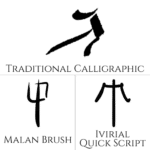
Benos / Vallor
“Hammer of Knowledge”, “Crafter of Worlds”, “Lantern Bearer”
Deity of the Cycle of Creation
To many, Benos represents the preservation of knowledge via creation, whether through writing or storytelling and other arts. Because of this, Benos’ followers are often librarians, smiths, and bards.
Benos in The Fifth Age
Followers of Benos, say in the beginning days of The Interregnum it was he who brought destruction to the world’s great centers of power so as to hide forever the knowledge that brought about the Tirsarian faiths’ downfall. Followers of Benos maintain this destruction was necessary as the world’s people had become complacent and too reliant on magic, losing the knowledge of working with their hands.
When worshipped as a Deity of destruction and/or knowledge, Benos is viewed as a bringer of lessons through hardships and a destroyer of barriers that prevent growth of the mind.
“Vallor” is used as this deity’s name when referring to the Tirsarian aspect of deity of which Benos is a part, that which existed prior to Sythlia’s emergence.
D&D 5e
Alignment: N
Suggested Domains: Arcana, Forge, Knowledge
Symbol: A blacksmith’s hammer
Pathfinder 2e
Areas of Concern: crafting, preservation of knowledge, enchantments, and cultures that value such things
Edicts: learn from past mistakes, preserve knowledge at all costs
Anathema: engage in the destruction of knowledge and secrets
Divine Attributes: Dexterity or Intelligence
Devotee Benefits
Cleric Spells: 1st: Mending, 3rd: Locate, 10th: Remake
Divine Font: heal
Divine Sanctification: can choose holy
Divine Skill: Crafting
Domains: ambition, creation, magic, secrecy
Favored Weapon: warhammer
 Crysera
Crysera
“Frozen Queen”
Deity of Ice and Death by Exposure, Hardships, and Pain
Some claim the zealots of Crysera are worshipers of nature’s cruelty. Yet those who follow the Ice Queen’s teachings of survival often laugh at such ignorant foolishness. They view all things as a tool of survival and will teach to those who have already proven themselves worthy of Crysera’s lessons.
D&D 5e
Alignment: LE
Suggested Domains: Nature, Tempest, War
Symbol: three parallel icicles of diminishing size
Pathfinder 2e
Areas of Concern: survival, hardships as lessons, cruelty without compassion, and isolation
Edicts: test others through pain so they may gain strength
Anathema: you show compassion to those unable to survive the tests of life
Divine Attributes: Constitution or Wisdom
DEVOTEE BENEFITS
Cleric Spells: 1st: enfeeble, 2nd: environmental endurance (self), 3rd: blindness
Divine Font: harm
Divine Sanctification: can choose unholy
Divine Skill: Survival
Domains: ambition, confidence, darkness, pain
Favored Weapon: spear
 Damarcane
Damarcane
Demi-Deity of Catastrophes
Damarcane embodies the force behind ruin, a bleak reminder that all things are subject to sudden and seeming irreversible obliteration.
D&D 5e
Alignment: NE
Suggested Domains: Ambition, Death, Tempest, War, Zeal
Symbol: three lines diverging from a single point in the heavens, symbolizing a torrent of destruction raining down on all worlds
Pathfinder 2e
Areas of Concern: destruction, disaster, and wrath
Edicts: In battle, use only the deadliest of options. In times of peace, test the resiliency of all around you
Anathema: You show mercy or choose a path other than the most carnage when appropriate
Divine Attributes: Constitution or Wisdom
Devotee Benefits
Cleric Spells: 1st: burning hands, 4th: divine wrath, 6th: phantasmal calamity
Divine Font: harm
Divine Sanctification: must choose unholy
Divine Skill: Torture Lore, War Lore
Domains: ambition, death, fire, zeal
Favored Weapon: greatsword or maul; the deadliest weapon the wielder may possess
 Damarnos
Damarnos
“Bearer of Aryos’ Flame”, “Extinguisher of Undead”
Deity of Light and Safety of Community
Overview
Adherents to the customs of Damarnos are quick to welcome others into their homes, but do not suffer those who would take advantage of them. They believe shelter, food, and clothing are essential rights of life and often act as advocates of those who lack such things, seeking to end whatever might cause such hardships.
As celebrants of life, more than one cleric of Damarnos has ventured into the darkness to shed some light and extinguish the undead.
D&D 5e
Alignment: NG
Suggested Domains: Grave, Light, Twilight
Symbol: a torch
Pathfinder 2e
Areas of Concern: safety found in community, nourishment, defense against the undead and enemies who seek to hide in the darkness
Edicts: share food
Anathema: destruction of another’s home for personal gain, suffering undead to exist
Divine Attributes: Intelligence or Charisma
DEVOTEE BENEFITS
Cleric Spells: 1st: bless, 2nd: create food, 3rd: holy light
Divine Font: heal
Divine Sanctification: can choose holy
Divine Skill: Religion
Domains: death, healing, sun, zeal
Favored Weapon: morning star
 Dragaaren
Dragaaren
“The Hidden Master”
Deity of the Deepdelves, Life, and Mystery
Overview
Though the secrets of the deepdelves were originally discovered by the slindar’il, the drahelvauri—and in particular, the karuun and guelt—furthered the exploration of these subterranean realms by leagues. Legend has it Dragaaren appears to those in need and provides comfort to those in the dark under realms, leading by example to the deity’s followers who today provide the same.
D&D 5e
Alignment: NG
Suggested Domains: Forge, City, Knowledge
Symbol: three mountain peaks; or, a crystal
Pathfinder 2e
Areas of Concern: excelling in one’s craft, preservation of tradition or lessons of the past, and exploring the world’s hidden treasures
Edicts: provide comfort to family and the unlucky, punish those who purposefully bring misfortune to others, rid the evil that lurks in the deepdelves, and seek the means to live as one truly wishes
Anathema: insult or bully others without wit, act rashly, allow one’s natural talent to waste
Divine Attributes: Strength or Wisdom
DEVOTEE BENEFITS
Cleric Spells: 1st: mystic armor, 2nd: create food, 5th: speak with stones
Divine Font: heal
Divine Sanctification: can choose holy
Divine Skill: Crafting or Lore
Domains: ambition, creation, family, protection
Favored Weapon: spear
 Dragana
Dragana
Deity of Storms, Chaos, and Change
Overview
Though a diverse group of people, followers of Dragana seem united by their reverence for the unpredictable and transformative nature of their deity. They’re often the more adaptable, resilient, and boldest of those facing life’s tumultuous events. Many ranging from a desire for personal empowerment to a deeper philosophical alignment with the concepts of change and chaos.
Some say agents of Dragana appear as a blue bird before a storm hits, cautioning those in the know what may soon happen.
D&D 5e
Alignment: CN
Suggested Domains: Nature, Tempest, Trickery
Symbol: a storm cloud; or, a stylized lightning strike
Pathfinder 2e
Areas of Concern: providing moments of reckoning, freeing the enslaved, and finding opportunity in turmoil
Edicts: allow others to suffer the consequences of their actions, exact vengeance when deserved, strike down tyranny
Anathema: cause others needless distress, inhibit others to live freely, allow yourself to be caught unawares
Divine Attributes: Dexterity or Wisdom
DEVOTEE BENEFITS
Cleric Spells: 1st: alarm, 2nd: noise blast, 4th: divine wrath
Divine Font: heal or harm
Divine Sanctification: can choose holy or unholy
Divine Skill: Intimidation
Domains: air, freedom, might, trickery
Favored Weapon: javelin
 Drenathis
Drenathis
Deity of New Beginnings, the Present, of Lessons Learned
The Becoming
The premise of a physical realm was first realized in Drenathis, even before Sythlia. Since the Tirsar’rg for “stability” was not a part of this concept, Drenathis’ creation of a material universe blinked out of existence as soon as it came to be. The Tirsar’rg of a physical universe continued to exist, however, and it became embodied in a series of physical objects known as the Caldra’fa Helix.
Beliefs
Devotees of Drenathis are taught to see opportunity in chaos and to act decisively. They come to understand that inaction or delay can lead to missed chances and stagnation.
D&D 5e
Alignment: N
Suggested Domains: Order, Fate, Light
Symbol: a single dot with four radiating beams
Pathfinder 2e
Areas of Concern: new beginnings and journeys, lessons learned,
Edicts: resist procrastination, make efficient decisions, have a plan and act on it
Anathema: allow irrational thoughts to get in the way of progress
Divine Attributes: Constitution or Wisdom
DEVOTEE BENEFITS
Cleric Spells: 1st: Sanctuary, 2nd: Clear Mind, 3rd: Safe Passage
Divine Font: heal
Divine Sanctification: can choose holy
Divine Skill: Diplomacy
Domains: confidence, fate, freedom, luck
Favored Weapon: scimitar
 Eddamar
Eddamar
Deity of absolute truth, “The Burden of Tirsar’rg”
Overview
Followers of Eddamar are often scholars, historians, philosophers, judges, investigators, and inquisitors seeking the truth beyond even mortal law. Others engage in worship through the pursuit of knowledge or the study of the realities shaped by the Tirsar, preserving the integrity of these truths against distortion or corruption.
Eddamar’s temples are serene sanctuaries of learning, often resembling vast libraries filled with ancient texts and spaces for quiet contemplation and scholarly debate.
D&D 5e
Alignment: LN
Suggested Domains: Knowledge, Mind, Order
Symbol: A symmetrical glyph representing a burst of knowledge
Pathfinder 2e
Areas of Concern: Community, Truth, and Fairness
Edicts: seek new experiences, stand for truth against all, learn from hard-earned lessons, be fair in judgement
Anathema: engage in willful ignorance, allow another to suffer false charges, defiance of truth for personal gain
Divine Attributes: Intelligence or Charisma
DEVOTEE BENEFITS
Cleric Spells: 1st: Sanctuary, 2nd: Augury, 7th: Divine Decree
Divine Font: heal or harm
Divine Sanctification: can choose holy or unholy
Divine Skill: Lore
Domains: fate, knowledge, perfection, truth
Favored Weapon: flail
 Fanaurr
Fanaurr
Demi-Deity of personal honor, glory, and nobility
D&D 5e
Alignment: LN
Suggested Domains: Life, Order, War
Symbol: figure holding a shield before them; one whose honor guides and protects
Pathfinder 2e
Areas of Concern: Honor, glory, truth, and nobility
Edicts: hold yourself accountable for your actions, learn from your mistakes, be known as an oath keeper
Anathema: break your word, defy your code, commit an act of betrayal
Divine Attributes: Strength or Charisma
Devotee Benefits
Cleric Spells: 1st: Protection, 3rd: Heroism, 6th: Zealous Conviction
Divine Font: heal or harm
Divine Sanctification: can choose holy or unholy
Divine Skill: Society
Domains: Confidence, Might, Truth, Zeal
Favored Weapon: lance or greatsword
 Fayan
Fayan
Demi-Deity of Murderous Death, Jealousy, Greed, and Selfish Actions
The Becoming
The First Murder caused a new deity to appear in Sythlia’s realms, one that embodied the Tirsar’rg of Conclusions. Sythlia mourned for the Great Consort but as a deity of pure life, Sythlia knew nothing of its end. The First Mother demanded from Conclusions this power over eternal existence, thus marking Conclusions as “Death”.
Death was torn into two demi-deities at Sythlia’s command. One became Fayer, the continuance of the divine embodiment of conclusions but now also the cycle of life and its natural end. The other became Fayan, a new demi-deity that embodied the First Murder and the selfishness of Sythlia’s request.
Overview
Driven by deep-seated feelings of jealousy, greed, and a relentless pursuit of personal gain, the followers of Fayan walk a deadly path To them obstacles are mere stepping stones on their bloodied road to power and success, adhering to the edict of letting nothing stand in their way. Devotees are typically skilled in stealth and deception, and use these abilities to further their own ends.
Places of worship are hidden and secretive, be it in a distant cave far from city walls or within the walls hidden in plain sight behind a butchery.
D&D 5e
Alignment: CE
Suggested Domains: Death, Trickery, War
Symbol: a downward-facing dagger with a single drop of blood
Pathfinder 2e
Areas of Concern: murder, selfishness, and egotism
Edicts: place the concern of others before yours
Anathema: provide care or concern for the weak
Divine Attributes: Strength or Dexterity
Devotee Benefits
Cleric Spells: 1st: Grim Tendrils, 7nd: Execute, 9th: Massacre
Divine Font: harm
Divine Sanctification: can choose unholy
Divine Skill: Stealth
Domains: ambition, death, secrecy, tyranny
Favored Weapon: dagger
 Fayer
Fayer
Demi-Deity of Natural Death, Endings, and Conclusions
Overview
Followers embrace the natural cycle of life and its inevitable end with a sense of peace and order. Death is not something to be feared or exploited but is instead a dignified and essential part of existence.
Fayerites often serve as comforting guides for those nearing the end of their lives, ensuring their transition through The Veiled Gate is serene and respectful.
Their places of worship are serene and often located in natural settings, reflecting their connection to the cycle of life and death, and they are skilled in the art of healing, using their knowledge to ease suffering and provide care at life’s end.
D&D 5e
Alignment: LN
Suggested Domains: Grave, Order, Peace
Symbol: a vertically symmetrical symbol comprised of a horizontal line dividing the lands of the living above with those of death below
Pathfinder 2e
Areas of Concern: respite, conclusions, eternal rest
Edicts: be a comforting guide for those passing through The Veiled Gate, hunt and punish murderers by Fayer’s Law of Balance, bring final peace to the undead
Anathema: to knowingly cause conditions where life cannot thrive
Divine Attributes: Constitution or Charisma
Devotee Benefits
Cleric Spells: 1st: detect poison, 2nd: peaceful rest, 6th: Field of Life
Divine Font: heal
Divine Sanctification: can choose holy
Divine Skill: Medicine
Domains: death, family, healing, travel
Favored Weapon: None
 Hadravyr
Hadravyr
“Lone Child of the Dreg’n”
Demi-Deity of Creative Forces, or Dragons
Overview
Followers are often divided on what Hadravyr actually represents. Some believe Hadravyr was the first material dreg’n, those spirits of creation Sythlia manifested to assist in the assembly of the rules of the universe and its tangential realms. In this capacity, Hadravyr represents the forces of creation.
To others, Hadravyr is a literal dragon god. Though few dragons worship Hadravyr as such, many humanoids including lizardfolk and kobolds do and see the awesome presence of dragons as something to aspire to.
Whatever Hadravyr truly is, the essence of this deity is mighty and aspirants and vyers alike find comfort in the strength granted by their beliefs.
Cults, Guilds, & Beliefs
Cult of the Wing
Based out of Cultrek, the Cult of the Wing is a secret organization of Hadravyrian dragon worshipers who believe that the dragons are the true masters of the world and that they should be revered and served by all other beings. They see themselves as the chosen followers of the dragons, and they seek to bring about the return of the dragons to their rightful place of rulership.
The Cult has a hierarchy of priests and acolytes who are dedicated to performing rituals and sacrifices in honor of the dragons. They believe that by doing so, they can gain the favor of the dragons and hasten their return. The Cult also has a militant wing that seeks to overthrow governments and other organizations that stand in the way of their goals.
The Cult is highly secretive and operates in the shadows, recruiting members through word of mouth and clandestine meetings. They are known to have infiltrated many powerful organizations and governments, and their influence is felt in many parts of the world. Many fear the power of the Cult, and those who speak out against them often disappear without a trace.
D&D 5e
Alignment: Any
Suggested Domains:
Creation Aspect: Arcana, Forge, Knowledge
Dragon Aspect: Arcana, Tempest, War
Symbol: A dragon taking flight
Pathfinder 2e
Areas of Concern:
Creation Aspect: Creation, learning, and application
Dragon Aspect: Might, force, self-assurance
Edicts:
Creation Aspect: Be decisive and enact change to create lasting value
Dragon Aspect: Be something to be feared or respected through your endeavors
Anathema: Allow fear to control you, meekness to steer your destiny
Divine Attributes:
Creation Aspect: Dexterity or Intelligence
Dragon Aspect: Strength or Wisdom
Devotee Benefits
Cleric Spells:
Creation Aspect: 1st: Mending, 2nd: Spiritual Armament, 10th: Indestructibility
Dragon Aspect: 1st:, Bane, 4th: Fly, 6th: Dragon Form
Divine Font: heal or harm
Divine Sanctification: can choose holy or unholy
Divine Skill:
Creation Aspect: Crafting
Dragon Aspect: Intimidation
Domains:
Creation Aspect: Creation, Fire, Knowledge, Wealth
Dragon Aspect: Ambition, Destruction, Might, Zeal
Favored Weapon:
Creation Aspect: light hammer
Dragon Aspect: spiked gauntlet
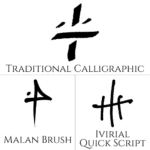 Medres
Medres
Demi-deity of the Plague & Undeath
D&D 5e
Alignment: NE
Suggested Domains: Arcana, Death, and Grave
Symbol: two hands and a body rising from the underearth
Pathfinder 2e
Areas of Concern: plague, disease, undeath, and suffering
Edicts: Bring suffering to all and promote the existence of undead, seek powers of necromancy
Anathema: Use positive energy to heal, destroy undead
Divine Attributes: Constitution or Wisdom
Devotee Benefits
Cleric Spells: 1st: Summon Undead, 3rd: Vampiric Feast, 7th: Eclipse Burst
Divine Font: Harm
Divine Sanctification: must choose unholy
Divine Skill: Intimidation
Favored Weapon: Scourge
Domains: Death, Decay, Plague, Undeath
![]()
 Urthes
Urthes
Demi-deity of manipulation, perverted truth, and twisted lies
D&D 5e
Alignment: LE
Suggested Domains: Order, Trickery, and Twilight
Symbol: a bisected curve demonstrating the twisting and piercing of words
Pathfinder 2e
Areas of Concern: Manipulation, deceit, self-importance
Edicts: Manipulate situations for one’s gain through trickery and lies
Anathema: Allow yourself to be tricked without vengeance, willfully pass up opportunities to advance self-interests
Divine Attributes: Dexterity or Charisma
Devotee Benefits
Cleric Spells: 1st: Command, 3rd: Crisis of Faith, 6th: Dominate
Divine Font: Harm
Divine Sanctification: must choose unholy
Divine Skill: Deception
Favored Weapon: Dagger
Domains: Ambition, Knowledge, Pain, Trickery
![]()
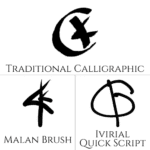 Zelres
Zelres
“The Mad Moons”, “The Eye in the Twisted Night”
Demi-deity of madness and paranoia
D&D 5e
Alignment: CE
Suggested Domains: Arcana, Knowledge, and Twilight
Symbol: a cracked circle or a cracked eye
Pathfinder 2e
Areas of Concern: Corruption, ignorance, and persecution
Edicts: Trust no one, seek answers beyond perceived realities, encourage others to see “the other side”
Anathema: Allow the status quo to go unchecked and unchallenged, seek alternative consciousnesses
Divine Attributes: Strength or Intelligence
Devotee Benefits
Cleric Spells: 1st: Fear, 4th: Blindness, 8th: Canticle of Everlasting Grief
Divine Font: Harm
Divine Sanctification: must choose unholy
Divine Skill: Diplomacy
Domains: Darkness, Nightmares, Trickery, and Tyranny
Favored Weapon: Whip
Harpies of Discord
The First Murder
&
The Spawn of Fayan
In the First Age, the people of the worlds roamed without knowledge of death. There was no war nor blood spilled, they knew nothing of clothing nor food, Life ever-lasting continued in all places and creation was never-ending. This was the tirsar’rg known as Sythlia, a deity strictly of life, nature, and creation.
The people of the world grew weary and over-crowded. Their call for succor fell on deaf ears. Sythlia put Her Plan in place and creation was never-ending. Sythlia had done her job.
In time, the cries of the people became too much. She created Ævyn to address these concerns on her behalf. The Great Consort walked among the people and learned of their lives.
The Slindar, meanwhile, sought space in the underrealms carved out by the waters and deep in the cracks of the earth. There they discovered molten stone that flowed like rivers and after centuries, learned the craft of smelting.
One particular Slin spent its life perfecting this craft and emerged from the underrealms with a crude bar of iron to show others who still wailed with the anguish of life without meaning.
The item’s existence caught the attention of Ævyn. He sought this Slin and marveled at what it had made: a long, thin thing created independent of Sythlia’s will.
The First Murder & The Surge
Some say Ævyn merely touched it. Others say Ævyn was stabbed, an action fueled by the Slin’s resentment toward Sythlia. Whatever the case, the course of the universe changed.
Ævyn’s divinity poured through the wound created by mortal will and changed into something new: arcane energy. This new energy, like the iron in the earth, could be shaped to mirror mortal will and used for their own purposes. The Surge, as this torrent of arcane energy came to be known, washed over all things and dimensions, creating new beasts and creatures.
The First Murder was now committed; Ævyn’s body collapsed. In response to the action of a life ending, a new deity appeared to represent this action: Conclusions.
Sythlia was outraged and demanded Ævyn be restored, that Her Plan include control over the dying. Yet her tirsar’rg only knew life. Sythlia disappeared to the Isles of Ævyn where only those untainted by the possibility of death could roam. What remained of Sythlia was nature, life, and her wrath.
In her place, Nor’dagha appeared, the dark facet of Sythlia that embodied that which she left behind.
Conclusions also split. and became Fayer and Fayan.
Fayer, a new demi-deity overseeing natural death and the first psychopomp in Sythlia’s realm, created the Veiled Gate and through it all who die must go.
Fayan embodied the selfishness and greed of the First Mother and also created a new realm: one of hatred, anger, and murder. Fayan would wield its own selfishness upon the worlds of Evindale, exploring new opportunities to bring death wherever it may.
The Creation of the Harpies
Soon thereafter, Fayan orchestrated the manipulation and grooming of three beings whose outlook was equally tainted. She slew each in turn and poured their essence into the Pond of Lament. From it crawled three beings: Medres, who would oversee plague and the undead; Urthes, who only knew manipulation through perverted truth and lies; and Zelres, whose mind was twisted and would cloud reality for others.
Thus was born the Harpies of Discord.
 Hjoldur
Hjoldur
“The Sleeping Earth”
Deity of Winter, Safety, Rest, Reflection, and Repose
D&D 5e
Alignment: NG
Suggested Domains: Grave, Life, and Nature
Symbol: A tree sprouting from cold earth
Pathfinder 2e
Areas of Concern: Community, respite, survival
Edicts: Bring an end to suffering, peace to the grieving, provide rest to those who require it
Anathema: Knowingly bring suffering, deny others council, create strife and war
Divine Attributes: Constitution and Wisdom
Devotee Benefits
Cleric Spells: 1st: Cleanse Cuisine, 2nd: Environmental Endurance, 6th: Field of Life
Divine Font: heal
Divine Sanctification: can choose holy
Divine Skill: Survival
Domains: Earth, Freedom, Healing, Protection
Favored Weapon: spear
,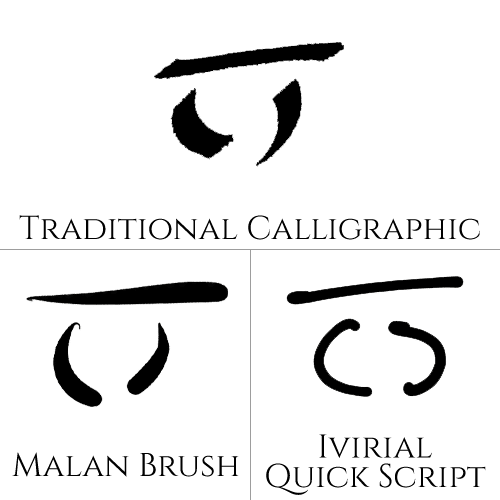
Igaos (Eddei)
One-third of the “Sisters of the Waters”
Demi-Deity of Water, Weather, and Travel; Patron Deity of Sailors
D&D 5e
Alignment: CN
Suggested Domains: Protection, Tempest, Fate
Symbol: A storm cloud under the heavens
Pathfinder 2e
Areas of Concern: Community, respite, survival
Edicts: Provide safe passage over water to travelers under your care, sacrifice libations to Igaos for safe travel
Anathema: Cause harm or obstruct the natural flow of water, or cause deliberate pollution to any body of water
Divine Attributes: Strength or Intelligence
Devotee Benefits
Cleric Spells: 1st: Air Bubble, 2nd: Water Walk, 4th: Divine Wrath
Divine Font: heal
Divine Sanctification: can choose holy
Divine Skill: Sailing Lore
Domains: Air, Protection, Travel, Water
Favored Weapon: spear
![]()

Igniara (Eddei)
One-third of the “Sisters of the Waters”
Demi-Deity of Water, Protection, and Shoreline Communities
D&D 5e
Alignment: N
Suggested Domains: Peace, Protection, Unity
Symbol: A cloud and rain
Pathfinder 2e
Areas of Concern: Community, respite, survival
Edicts: Safeguard natural sea life habitations, do not overfish an area
Anathema: Destroy natural habitats of sea life. Destroy coastline with man made constructions
Divine Attributes: Dexterity or Charisma
Devotee Benefits
Cleric Spells: 1st: Cleanse Cuisine, 2nd: Create Food, 5th: Breath of Life
Divine Font: heal
Divine Sanctification: can choose holy
Divine Skill: Society
Favored Weapon: Shield
Domains: Earth, Family, Protection, Water
![]()
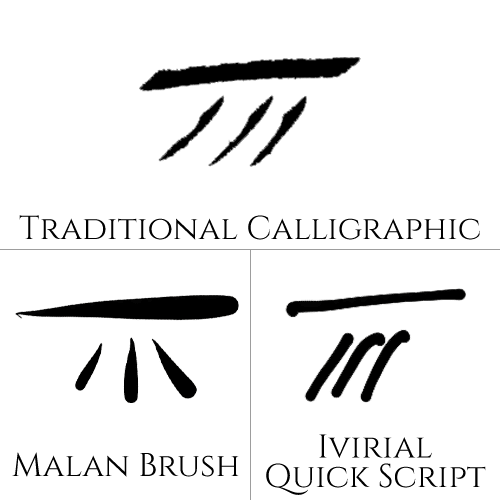
Ignimir (Eddei)
Demi-Deity of Water, Healing, and Liberation
D&D 5e
Alignment: Any good
Suggested Domains: Peace, Protection, Unity
Symbol: A gentle, healing rain
Pathfinder 2e
Areas of Concern: Community, healing, freedom
Edicts: Work to free those under the oppressive grip of another and to bring communities together
Anathema: Suffer enslavement or undue harm to exist
Divine Attributes: Strength or Wisdom
Devotee Benefits
Cleric Spells: 1st: Protection, 3rd: Safe Passage, 5th: Spiritual Guardian
Divine Font: heal
Divine Sanctification: can choose holy
Divine Skill: Medicine
Favored Weapon: staff
Domains: Family, Freedom, Healing, Water
The Eddei
The Three Sisters of the Waters
Typically the Three Sisters are worshiped by land-based creatures as a collective. As such, very few temples are dedicated to one over the other but within each, there may be separate areas for each Deity. Mind you, every statue in a land-based temple depicts always all three deities then known as The Eddei.
Instead, there are small intimate altars either on or at the shores of lakes, rivers, and oceans where offerings can be made.
Specific locations to each one of the Sisters are within their native elements and are never constructs but rather naturally occurring phenomena such as the depression in the silt after a whirlpool, etc. As such, these locations often change.
There are, however, three permanent temples dedicated to each of the Water Deities. At 10th level, all vyers/clerics are expected to make a pilgrimage to such locations (all are underwater). One is in the Great Gelesic Ocean, Sarak’s Bath (a large freshwater lake south of the Gelehinde Bay near Cultrek), and in the Drenihil River in eastern Iviria.
All in all, followers of The Eddei tend to be relaxed and easy-going types; it’s a religion that emphasizes a flowing nature and adaptation to obstacles and threats. The healing aspect of The Eddei is seen as a perfect example on a small level of the brute power of water. While it normally flows around objects water can be a destroyer of things, more than fire which often leaves something behind from which life may begin once more. Water destroys, erodes, and carries away. Such as it is with wounds or mountains. The Eddei teachings hold to always seek a way around an obstacle rather than confront it head-on. When prevented from journeying forth because of an obstacle, the power of water is brought to bear and the obstacle is to be obliterated. Thus clerics of The Eddei are less about peace and more about adaptation but also do not represent stagnation.
 Ílladir
Ílladir
“Caretaker of Home”, “Green One”
Demi-Deity of the Th’il
D&D 5e
Alignment: CG
Suggested Domains: Knowledge, Life, Nature
Symbol: Th’Illian script glyph of “the people”
Pathfinder 2e
Areas of Concern: Th’il, community, nature, and tradition
Edicts: Make a pilgrimage once every ten years to Rithrydel Zhrertrix in Wyth Tyr’il, the legendary site of Sythlia’s creation of Ílladir and the th’il.
Anathema: Permit the destruction of natural habitats, particularly those of th’il or fae
Divine Attributes: Dexterity or Intelligence
Devotee Benefits
Cleric Spells: 1st: Bless, 3rd: Speak with Plants, 5th: Scouting Eye
Divine Font: heal
Divine Sanctification: can choose holy
Divine Skill: Nature
Favored Weapon: longbow
Domains: Earth, Family, Knowledge, Nature
 Ipparya
Ipparya
“Keeper of Her Plan”
Deity of restoration of natural state and balance, protection of nature
D&D 5e
Alignment: LN
Suggested Domains: Nature, Order, Twilight
Symbol: A scale weighing a wand against a tree
Pathfinder 2e
Areas of Concern: Arcane, nature, balance, and primal energies
Edicts: Promote balance between forces of nature, vanquish enemies of natural law, stop overuse of magic in the alteration of the physical world
Anathema: Allow practitioners of the arcane to manipulate reality permanently; prevent the consequence of natural action
Divine Attributes: Strength or Wisdom
Devotee Benefits
Cleric Spells: 1st: Alarm, 3rd: Speak with Plants, 5th: Scouting Eye
Divine Font: heal
Divine Sanctification: can choose holy or unholy
Divine Skill: Nature
Favored Weapon: war flail
Domains: Earth, Nature, Protection, Truth
 Iviria
Iviria
Demi-deity of cities and civilization
The Becoming
Soon after Ævyn’s death at the end of the First Age, the portion of Sythlia’s tirsar’rg that personified the possibility of mortal civilization and growth took shape. It manifested as a young woman with amnesia who was taken in by villagers. She had an inexplicable understanding of the region, dialects, and developing cultures throughout the world, speaking of them as if she had first person knowledge. This caused some to accuse her of being an italti, beings mutated by The Surge and many of whom who were using their god-like abilities to subjugate others under tyrannical rule.
D&D 5e
Alignment: LN
Suggested Domains: Forge, Life, Order
Symbol: A city’s skyline over water
Pathfinder 2e
Areas of Concern: Civilizations, cities, crafting, and expansion
Edicts: Encourage settlements and expansion of civilization for the natural world is yours to command, study world histories and rediscover ancient ruins, seek betterment of society for the greater need
Anathema: Be a bottleneck for progress, ignore opportunities to further
Divine Attributes: Dexterity or Charisma
Devotee Benefits
Cleric Spells: 1st: Mending, 5th: Wall of Stone, 7th: Planar Palace
Divine Font: harm or heal
Divine Sanctification: can choose holy
Divine Skill: Crafting
Domains: Ambition, Cities, Creation, Wealth
Favored Weapon: any hammer
 Kathos
Kathos
Greater deity of space-time and fate
D&D 5e
Alignment: N
Suggested Domains: Arcana, Knowledge, Trickery
Symbol: stylized hourglass
Pathfinder 2e
Areas of Concern: Consequence, travel, time, and trickery
Edicts: Encourage chance-taking and risk for the greater reward but accept consequence of action
Anathema: Promote inaction, use time-stopping magics, allow outside agents to interfere with Sythlia’s realm
Divine Attributes: Constitution or Wisdom
Devotee Benefits
Cleric Spells: 1st: Fleet Step, 4th: Flicker, 9th: Foresight
Divine Font: harm or heal
Divine Sanctification: can choose holy or unholy
Divine Skill: Survival
Domains: Fate, Luck, Travel, Trickery
Favored Weapon: scythe
 Kyrasil
Kyrasil
“Walker of Worlds”, “She Who Lives Between”, “Watcher of the Crossroads”
Deity of the midnight hour, change, and difficult decisions
D&D 5e
Alignment: CN
Suggested Domains: Peace, Protection, Twilight
Symbol: Three roads converging, one is a clear path
Pathfinder 2e
Areas of Concern: Darkness, change, survival, and decisions
Edicts: Seek new experience, roam the open roads, explore all realities
Anathema: Settle for stagnation when chance and adventure avail themselves; deny others the chance to explore
Divine Attributes: Strength or Intelligence
Devotee Benefits
Cleric Spells: 1st: Protection, 2nd: Augury, 6th: Repulsion
Divine Font: harm or heal
Divine Sanctification: can choose holy or unholy
Divine Skill: Survival
Domains: Darkness, Luck, Protection, Travel
Favored Weapon: Staff
 Lyrtas
Lyrtas
“Child of Mortal Law”
Demi-Deity of Law, Justice, Truth
D&D 5e
Alignment: LG
Suggested Domains: Knowledge, Order, Peace
Symbol: scales
Pathfinder 2e
Areas of Concern: Law, justice, truth, and investigation
Edicts: pursue justice according to local law, prevent others from breaking mortal regional laws
Anathema: knowingly break an applicable mortal code of law in the character’s region
Divine Attributes: Strength or Wisdom
Devotee Benefits
Cleric Spells: 1st: Command, 3rd: Holy Light, 7th: Execute
Divine Font: heal
Divine Sanctification: must choose holy
Divine Skill: Society
Domains: Confidence, Knowledge, Truth, Zeal
Favored Weapon: longsword
 Lyrter
Lyrter
“Executor of Nor’dagh’as Will”
Demi-Deity of Natural Law; Rangers, and Druids
D&D 5e
Alignment: N
Suggested Domains: Grave, Life, Nature
Symbol: road between elements of nature
Pathfinder 2e
Areas of Concern: pathways, trails, survival, and natural law
Edicts: Protect the natural order of Nor’dagha’s realm
Anathema: Cause a permanent or lasting disruption of the natural order of things
Divine Attributes: Dexterity or Wisdom
Devotee Benefits
Cleric Spells: 1st: Pummeling Rubble, 5th: Nature’s Pathway, 9th: Wrathful Storm
Divine Font: heal or harm
Divine Sanctification: can choose holy or unholy
Divine Skill: Survival
Domains: Earth, Might, Nature, Protection
Favored Weapon: quarterstaff
Myrse
(MEER•say)
“The Dance”, “The Muse”
Deity of Art, Creation, Expression, and Freedom of Mind
Overview
Said to be of relation to Vasja, Myrse made itself first known to the Feristi bards of the Pundesh Bardic College. For one week (later known as “The Miracle of Myrse”), a symphony of music, poetry, and other forms of passionate creative expression took over the students. During this time, many masterpieces were created and several bards found themselves dedicated to this seemingly new deity in the pantheon of Tirsarian deities.
D&D 5e
Alignment: CN
Suggested Domains: Forge, Life, Peace
Symbol:
Pathfinder 2e
Areas of Concern: art, creation, freedom, and expression
Edicts: Never pass up the opportunity to create or express via art, be it poetry, illustration, or other works; go with the flow of creativity
Anathema: Destroy or unnecessarily critique art or suppress the creative
Divine Attributes: Constitution or Wisdom
Devotee Benefits
Cleric Spells: 1st: Runic Weapon, 4th: Unfettered Movement, 8th: Canticle of Everlasting Grief
Divine Font: heal
Divine Sanctification: can be holy or unholy
Divine Skill: select Crafting or Performance
Domains: Creation, Life, Freedom, Passion
Favored Weapon: fighting fan
 Nikela
Nikela
Demi-Deity of Family and Community
D&D 5e
Alignment: LG
Suggested Domains: Life, Order, Peace
Symbol: sun shining upon hills
Pathfinder 2e
Areas of Concern: family, community, health, and safety
Edicts: Place community before family, family before self. Further community goals.
Anathema: Betray loved ones, break a promise or oath, cause a blight of any kind
Divine Attributes: Dexterity or Intelligence
Devotee Benefits
Cleric Spells: 1st: Detect Poison, 2nd: Cleanse Affliction, 5th: Spiritual Guardian
Divine Font: heal
Divine Sanctification: must choose holy
Divine Skill: Society
Domains: Family, Freedom, Indulgence, Luck
Favored Weapon: short swords
 Nor’dahga
Nor’dahga
“Bordü Moma”, “The Wild Witch”
Demi-deity of nature; the wilds; the moons; patron deity of Mütvia; the dark nature of Sythlia
D&D 5e
Alignment: CN
Suggested Domains: Life, Nature, Tempest
Symbol: two outward-facing crescent moons with a single full moon between
Pathfinder 2e
Areas of Concern: nature, life, weather, and natural disasters
Edicts: Destroy all undead, prevent the alternation of the natural through non-natural means; observe the many feasts and festivals of Nor’dagha
Anathema: Ignore the Nor’daghan feasts and festivals, suffer the existence of the undead, attempt to rise above natural law
Divine Attributes: Strength or Wisdom
Devotee Benefits
Cleric Spells: 1st: Gust of Wind, 3rd: Speak with Plants, 6th: Tree of Seasons
Divine Font: Heal or Harm
Divine Sanctification: can choose holy or unholy
Divine Skill: Survival
Favored Weapon: Any bow
Domains: Air, Earth, Moon, and Nature
Cults, Guilds, & Beliefs
Cult of the Wild Witch
The Mütvi hold life is a challenge, with Nor’dagha as the sole reason for such things. Here, she’s known as the Wild Witch.
To some, she represents the Land itself although outside of this country, Nor’dagha goes largely unrecognized.
As a cult, Nor’dagha has her origins in northern Mütvia among the drósti who view her as the savage witch of the woods, demanding sacrifices. To some, these sacrifices are nothing more than drink and food. To others, her thirst for blood is never slaked.
Cult of Mt. Verich
The noble House Dracovich, known in that country for its furthering of Nor’dagha as the primary god Mütvians should revere, holds within its domain Mt. Verich, a dormant cone volcano on which rests the famous Dracovich keep, Dreg’nsoi.
The slumbering volcano is said to be a holy site containing the last of the mighty dreg’n. These gargantuan progenitive creatures allegedly assisted in the world’s formation under Sythlia. After their duties were done, they come under Nor’dagha’s domain though they are believed to be nothing more than myth. House Dracovich claims otherwise but offers no proof. As such, they’ve used their power and influence to ensure the bodies of no less than three Archvyers of Nor’dagha (archdruids) face found their final rest here.
This, combined with the rumor of what lies within has turned Mt. Verich into a place of pilgrimage. House Dracovich fervently protects the roads leading to and from Mt. Verich.
Bordü Moma
Not a cult, but a Mütvian belief that Nor’dagha is the figure known as Bordü Moma, a crone of the woods whose gaze causes immediate death, causes ones entrails to decorate the walls of your home, and other gruesome legends.
Others state this loathsome old crone is a separate entity. They say those who view the old woman of the woods are doomed to die within 24 hours and always of natural causes.
Sanji as agenst of Nor’dagha
It is unsure if the sanji forest spirits in Mütvia directly worship Nor’dagha, recognize her as a deity, or are an extension of her existence. All can agree, however, where Nor’daghan shrines exist and active worship is had, the sanji are often seen in the balance between light and dark.
Guild of the Branch
Their charter explains it: “Eradicators of Nor’dagha’s enemies; hunters of users of dark magicks; wardens of the far reaches of Her realm; protectors of the sanji; enforcers of Nature’s Might.”
The Guild of the Branch are known witch hunters, seeking and eradicating any who practice such crafts. They are ruthless in their hunt and often will kill any who stand in their way.
One of the few divine guilds, the Guild of the Branch has more than a few vyers within its ranks, though zealous weapon-wielding commoners make up the core of the organization.
They are also known to ignore political boundaries and local laws, citing theirs is a divine mission and not subject to “the paltry and ever-changing doctrines of mere humans,” according to Grand Inquisitor Domovich, the Guild’s current nationwide leader in Mütvia.
Membership: ~430
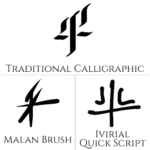 Onamar
Onamar
Demi-Deity of Undoing and War
D&D 5e
Alignment: NE
Suggested Domains: Death, Tempest, War
Symbol: a torch of unholy fire
Pathfinder 2e
Areas of Concern: destruction, death, unmaking, and obliterate
Edicts: Destroy all that which doesn’t serve Onamar’s purpose; bring war as a tool of learning
Anathema: Suffer the folly of art’s creation and the existence of Sythlia’s worshipers
Divine Attributes: Strength and Charisma
Devotee Benefits
Cleric Spells: 1st: Fear, 4th: Divine Wrath, 9th: Massacre
Divine Font: harm
Divine Sanctification: must choose unholy
Divine Skill: Intimidation
Domains: Death, Destruction, Tyranny, Zeal
Favored Weapon: alchemical bombs
Devotee Benefits
Divine Font: Harm
Divine Skill: Warfare Lore
Favored Weapon: Alchemical Bombs
Domains: Destruction, Death, Decay, Fire
 R’shlidal (CG)
R’shlidal (CG)
“The Dreamer”, “The one of one thousand mouths”
Deity of dreams, messenger of the Deities
D&D 5e
Alignment: CG
Suggested Domains: Arcana, Knowledge, Light
Symbol: radiant crystals
Pathfinder 2e
Areas of Concern: communication, sharing of knowledge, dreams and portents
Edicts: Promote open communication, be open to new possibilities, prevent stagnation
Anathema: Disallow diplomacy or communication that may yield valuable information
Divine Attributes: Constitution and Charisma
Devotee Benefits
Cleric Spells: 1st: Mindlink, 3rd: Dream Message, 5th: Dreaming Potential
Divine Font: heal
Divine Sanctification: must choose holy
Divine Skill: Diplomacy
Domains: Creation, Dreams, Freedom, Perfection
Favored Weapon: staff
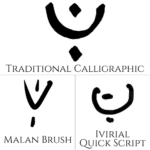 Serathid (NG)
Serathid (NG)
Deity of Shadows, Occult Knowledge, and Hidden Treasures
D&D 5e
Alignment: NG
Suggested Domains: Knowledge, Trickery, Twilight
Symbol: stylized half moon
Pathfinder 2e
Areas of Concern: knowledge gained through hard work, keeping secrets, teaching
Edicts: Work for the knowledge you gain, take advantage of opportunities to gain knowledge, be a willing teacher to those willing to work to learn; take risks to earn a greater reward
Anathema: Provide knowledge for free, provide for those who have not worked for it; allow fear or ignorance to influence one’s decisions
Divine Attributes: Dexterity or Intelligence
Devotee Benefits
Cleric Spells: 1st: Disguise Magic, 2nd: Darkness, 3rd: Veil of Privacy
Divine Font: heal
Divine Sanctification: can choose holy
Divine Skill: Stealth
Domains: Darkness, Moon, Secrecy, Trickery
Favored Weapon: dagger
 Talavyr
Talavyr
Deity of the underearth & nature corrupted
D&D 5e
Alignment: CE
Suggested Domains: Death, Grave, Nature
Symbol: skulls above and below ground
Pathfinder 2e
Areas of Concern: Underearth, realms of the dead, blight, and famine
Edicts: Do not resist attempts to gain immortality through undeath, serve undead masters
Anathema: Suffer the existence of undead hunters, reject a safe haven to undead masters
Divine Attributes: Strength or Wisdom
Devotee Benefits
Cleric Spells: 1st: Grim Tendrils, 3rd: Vampiric Feast, 6th: Vampiric Exsanguination
Divine Font: harm
Divine Sanctification: must choose unholy
Divine Skill: Religion
Domains: Ambition, Death, Undeath, Zeal
Favored Weapon: scythe
 Tarasmur
Tarasmur
Demi-Deity of trade, travel, and adventure
D&D 5e
Alignment: NG
Suggested Domains: Arcana, Order, Peace
Symbol: footsteps on an open road
Pathfinder 2e
Areas of Concern: community, trade, economics, and learning
Edicts: Explore the worlds, promote trade, blaze new paths, discover new ways to travel
Anathema: Deny exploration, prevent trade, engage in isolationism
Divine Attributes: Constitution or Charisma
Devotee Benefits
Cleric Spells: 1st: Fleet Step, 2nd: Environmental Endurance, 3rd: Locate
Divine Font: heal
Divine Sanctification: can choose holy
Divine Skill: Diplomacy
Domains: Ambition, Cities, Travel, Wealth
Favored Weapon: staff
 Thela
Thela
Demi-Deity of vengeance and love scorned
D&D 5e
Alignment: CN
Suggested Domains: Knowledge, Tempest, War
Symbol: a broken heart
Pathfinder 2e
Areas of Concern: Apathy, passion, vengeance, wrath
Edicts: Seek vengeance for any wrongdoing in a cold and calculating fashion, do not allow emotions to interfere with personal progress
Anathema: Allow passions to rule one’s course, permit harmful acts against you to go unavenged
Divine Attributes: Dexterity or Charisma
Devotee Benefits
Cleric Spells: 1st: Fear, 2nd: Entangling Flora, 7th: Fiery Body
Divine Font: harm
Divine Sanctification: must choose unholy
Divine Skill: Intimidation
Domains: Ambition, Destruction, Pain, Protection
Favored Weapon: Dagger of venom
 Tyrla
Tyrla
“The Twist”
Demi-Deity of Nightmares and Fear
D&D 5e
Alignment: CE
Suggested Domains: Ambition, Trickery, Zeal
Symbol: a twisting void
Pathfinder 2e
Areas of Concern: Mental domination, fear, nightmares, sadism, and tyranny
Edicts: Rule by fear, force change, test the natural boundaries of Sythlia’s reality
Anathema: Allow the mundane to govern, allow your own fears to control you
Divine Attributes: Intelligence
Devotee Benefits
Cleric Spells: 1st: Fear, 2nd: Paranoia, 9th: Seize Soul
Divine Font: harm
Divine Sanctification: must choose unholy
Divine Skill: Lore
Domains: Ambition, Darkness, Nightmares, Zeal
Favored Weapon: spiked chain
 Unnos (CG)
Unnos (CG)
Deity of passion and romantic love
D&D 5e
Alignment: CG
Suggested Domains: Life, Peace, Trickery
Symbol: a dancing figure
Pathfinder 2e
Areas of Concern: passion, romantic love, protection, and creation
Edicts: Embrace one’s passions with abandon, indulge in vices to seek further pleasures
Anathema: Allow banality in to one’s life, deny pleasures to yourself and others
Divine Attributes: Dexterity or Charisma
Devotee Benefits
Cleric Spells: 1st: Bless, 3rd: Cozy Cabin, 6th: Vibrant Pattern
Divine Font: heal
Divine Sanctification: can choose holy
Divine Skill: choose Diplomacy or Performance
Domains: Creation. Indulgence, Passion, Protection
Favored Weapon: fighting fan
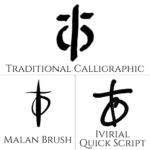 The Urchin (CN)
The Urchin (CN)
“Hidden Master”
Demi-Deity of Urban Survival
Overview
The only deity to not have a proper name, The Urchin is worshiped in two fashions: by those who delve into the earth seeking forgotten treasures, and by those who seek their fortunes at the expense of others.
Amazingly, followers of The Urchin share a camaraderie between themselves that transcends political or religious beliefs lending to the adage “Honor among thieves”. In each major city is said to be a Thieves Guild, and all members are expected to pay their dues and work their way up the hierarchy within. Ostensibly a business-driven society, many of these guildhalls also double as temples to The Urchin, and with the Guild Master also as the local high priest in some of the more powerful guildhalls.
D&D 5e
Alignment: CN
Suggested Domains: Ambition, Trickery, Twilight
Symbol: coin pierced by a dagger
Pathfinder 2e
Areas of Concern: Survival in urban environments, theft, community of like-minds, and collecting wealth
Edicts: Survive at all costs, take what you need
Anathema: Pass up an opportunity for one’s own gain, allow unprotected valuables to not be in your permanent care
Divine Attributes: Dexterity or other
Devotee Benefits
Cleric Spells: 1st: Pest Form, 3rd: Safe Passage, 4th: Vapor Form
Divine Font: heal or harm
Divine Sanctification: can choose holy or unholy
Divine Skill: Thievery
Domains: Cities, Luck, Trickery, Wealth
Favored Weapon: dagger
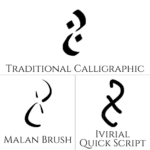 Vasja (CG)
Vasja (CG)
“Mistress of the Mind”, “The Grip”, “The Ring”
Demi-Deity of inspiration and lyric poetry
D&D 5e
Alignment: CG
Suggested Domains: Arcana, Life, Peace
Symbol: figure caught in rapture
Pathfinder 2e
Areas of Concern: Inspiration, acting as another’s muse, creation, and writing
Edicts: Celebrate life in all its forms and indulgences, be creative and passionate in your endeavors
Anathema: Deny yourself pleasure and creativity
Divine Attributes: Dexterity and Charisma
Devotee Benefits
Cleric Spells: 1st: Charm, 4th: Honeyed Words, 10th: Fabricated Truth
Divine Font: heal
Divine Sanctification: can choose holy
Divine Skill: Crafting or Performance
Domains: Creation, Freedom, Indulgence, Zeal
Favored Weapon: bladed scarf
 Ysara
Ysara
“Aevyn’s blood”, “The Italti’s Spirit”
Demi-Deity of Manipulation, Deception, Magic, and Treachery
The Becoming
Upon The Surge and the creation of the italti, a new facet of existence came to be and with it, Ysara as its personfication.
Beliefs
Followers of Ysara firmly believe in the sanctity of personal power and advancement. To many within, the First Murder was a necessary act of liberation from the confines of Sythlia’s tyrannical divine mandate.
Cults of Ysara
The Veiled Hand
The Veiled Hand operates in the shadows, often in large cities. Its members are drawn from the ranks of disillusioned nobles, cunning merchants, and disenfranchised wielders of magic. They see Ysara not as a deity of sheer malevolence but as a liberator, freeing them from societal chains through the pursuit of arcane power and the art of manipulation.
Within ranks some are students of history who work to uncover the true identity of the one who freed them from Sythlia’s grasp. They hail this mysterious person as a silent hero who delivered a powerful tool to ordinary people, one able to be wielded by those cunning and ambitious enough to understand it.
Others believe it to be the italti Vuraelagus, forever changed to thirst for the knowledge he spilled into Sythlia’s worlds. Members of the Veiled Hand seek the italti’s hiding place to learn more.
The Whispering Shadows
Found in the forgotten places of the world—ruined cities, abandoned temples, and deep forests—the Whispering Shadows consist of outcasts and rebels. They are the downtrodden, the forgotten; those who found strength and purpose in Ysara’s teachings.
This cult focuses on the personal liberation through deception and the secretive accumulation of magical knowledge. Their rituals are more primal, often involving communing with the spirits of those who have been wronged, seeking to learn from their experiences. They believe in using their acquired power to protect themselves from the harshness of the world that has rejected them.
Ysara Plot Hooks
The Unseen Influence: The players discover a political turmoil as a result of the manipulations of The Veiled Hand. They must navigate a web of deception, uncovering the cult’s influence on the city’s leaders.
Ritual of the Tainted Blood: Rumors surface of a powerful ritual being prepared by The Whispering Shadows, one that could unleash a wave of arcane energy across the land in remembrance of The Surge, blurring the lines between life and death. The players must find and stop the ritual.
The Betrayer Among Us: One of the players receives a mysterious invitation to join The Veiled Hand, recognizing their potential for great power. As they delve deeper into the cult’s secrets, they are asked to prove their loyalty through an act of betrayal against their comrades.
D&D 5e
Alignment: CE
Suggested Domains: Arcana, Death, Trickery
Symbol: A stylization of arcana being thrust into the ground
Pathfinder 2e
Areas of Concern: Manipulation, Deception, Magic, and Treachery
Edicts: advance yourself in arcane studies at any cost
Anathema: show concern for those who stand in your way
Divine Attributes: Strength or Intelligence
Devotee Benefits
Cleric Spells: 1st: Mystic Armor, 4th: Dispelling Globe, 5th: Hallucination
Divine Font: harm
Divine Sanctification: must choose unholy
Divine Skill: Arcana
Domains: Magic, Trickery, Tyranny, Undeath
Favored Weapon: dagger
